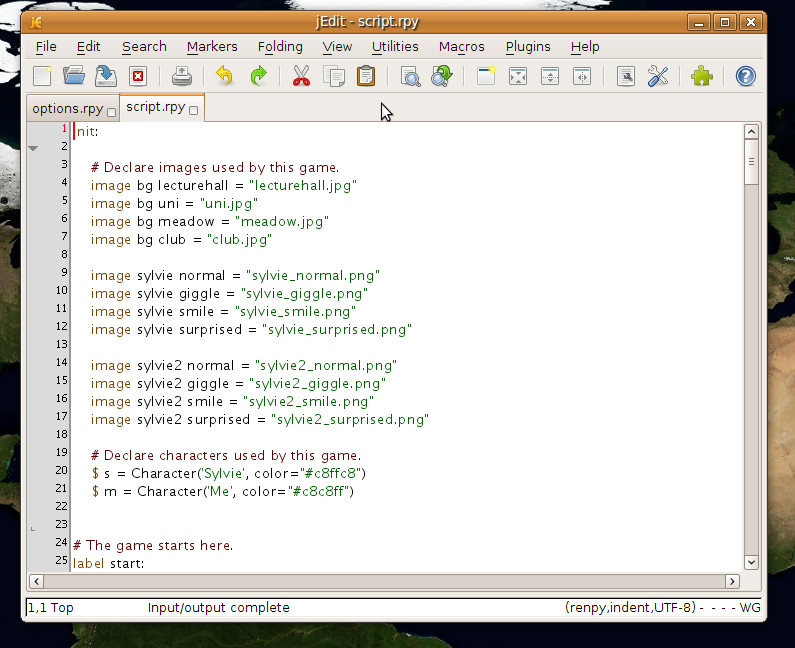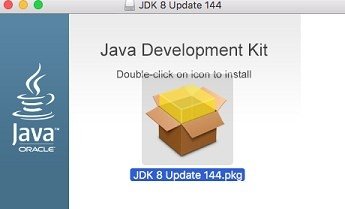The following are the system requirements for installing the JDK and the JRE on macOS:
Any Intel-based computer running macOS.
Administrator privileges.
You cannot install Java for a single user. Installing the JDK and JRE on macOS is performed on a systemwide basis for all users. Administrator privileges are required to install the JDK and JRE on macOS.
When you install the JDK, it also installs the JRE. However, the system will not replace the current JRE with a lower version.
To determine the current JRE version installed on your system, see Determining the JRE Version Installed on macOS. To install an earlier version of the JRE, you must first uninstall the current version. See Uninstalling the JRE on macOS.
When you install the JRE, you can install only one JRE on your system at a time. The system will not install a JRE that has an earlier version than the current version.
To determine the current JRE version installed on your system, see Determining the JRE Version Installed on macOS. To install an earlier version of the JRE, you must first uninstall the current version. See Uninstalling the JRE on macOS.
Note:
Installing a JRE from Oracle will not update
java -versionsymlinks or addjavato your path. To do this, you must install the JDK.
Download Latest Jdk Java Mac Os X 10.13
In this post you will learn how to set the default JAVA_HOME in OS X when you have more than one JDK installed in your computer. First you need to run /usr/libexec/java_home -V command to get the list of installed JDK. The command will print out something like the following depending on the available JDK in your computer.
Java For Mac Os X

Download Latest Jdk Java Mac Os X64
- Solaris Operating System - Version 10 1/13 U11 to 10 1/13 U11 Release 10.0 Java SE JDK and JRE - Version 6 and later Linux x86 Oracle Solaris on SPARC (32-bit) Linux x86-64 Oracle Solaris on x86-64 (64-bit) Linux ARM 32-bit VFP SoftFP ABI Oracle Solaris on x86 (32-bit) Apple Mac OS X (Intel) (64-bit) Microsoft Windows x64 (64-bit).
- So we will have to first install Java and then maven into our Mac OS. Installing Java on Mac. We will install OpenJDK in our Mac OS. It’s free and you don’t have to worry about licensing that comes with Oracle JDK build. 1.1) Downloading Java for Mac OS. Go to the latest JDK GA release page and download the tar file for Mac OS.
- The latest version like JDK 11, 13 does not provides JRE installers. Now see how to download and install JDK 8 & JRE in Mac OS without any confusion. The Java SE Development Kit 8 has many releases from JDK 8 to JDK 8u241. Here in this blog we will see the installation of JDK 8u241 on MacOS 10.15 Catalina.
- Java/Mac FAQ: Where is JAVAHOME located on Mac OS X (macOS) systems? MacOS JDK location. This has changed over time, but if you're using Mac OS X 10.9 or newer (now macOS), your JDK/SDK JAVAHOME location for Java 8 will be something like this.
On my machine I have the following version of Java.
From the list above pick which version you want to be the default JDK. For example I will choose the 1.8.0_121 version to be my default JDK. To set it run the command below.
Java 6 For Mac
If the major version of the available JDK is unique you can just use the major version, like:
After setting the JAVA_HOME and you run the java -version command you will see that JDK 1.8 is the new default JDK in your computer.
The change above will only active in the current running shell. If you close or terminate the shell, next time you open the shell you will need to set it again. To make this change permanent you need to set it in your shell init file. For example if you are using bash then you can set the command in the .bash_profile. Add the following lines at the end of the file.
Even before that, the new Java Plug-In already supports launching applets in a 64-bit JVM from a 32-bit browser on Mac OS X. Beyond the core support for Mac OS X, the following changes were made: - Bugs were fixed in com.sun.deploy.cache.CacheEntry, com.sun.deploy.config.Config, and com.sun.deploy.util.SyncFileAccess related to network-mounted.
Java 1.7 Download Mac

To activate this configuration right away your can run source .bash_profile. This command reads and executes the .bash_profile in the current shell.
Download Java Jdk Mac Os X
- How do I convert java.util.TimeZone to java.time.ZoneId? - April 25, 2020
- How do I get a list of all TimeZones Ids using Java 8? - April 25, 2020
- How do I get HTTP headers using HttpClient HEAD request? - April 22, 2020

